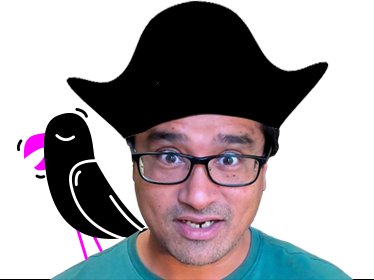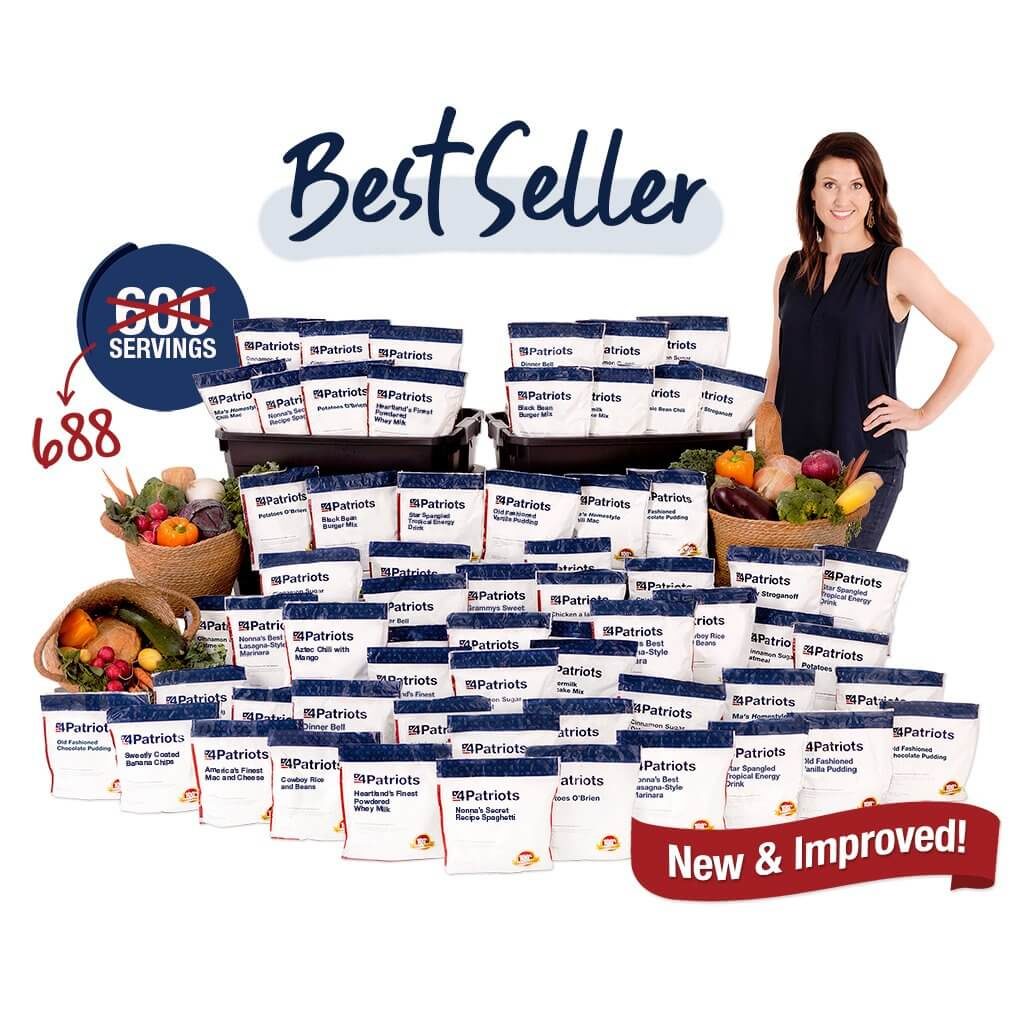Blog
Conversion Copywriting: Strategies That Will Make You $$$
Conversion copywriting has just one role, to get prospects from “this is fascinating” to “where do I enter my credit card number?”
My name is Rishi and I’ve been thinking about conversion optimization for the last 15 years. I’ve written 750+ thought pieces and you’ve just stumbled onto the most important one.
This piece is the core of everything we’ve learned about conversion copywriting.
The winning copywriting formula didn’t just land on our laps. We spent years lost in the wilderness.
How We Discovered the Conversion Copywriting Formula That Works
We’ve experimented with everything— from the design to headlines to the layout.
What we discovered was there there were four core things we had to complete to convert the shopper:
• Demonstrate expertise.
• Contrast yourself from alternatives.
• Make buyers feel they’ve found the one.
• Anticipate and address negative thoughts.
And from this set of four, we were able to construct a list of nine fundamental truths about shoppers:
#1: People Are Skeptical of “Too Good to Be True”

Marketing works by making claims. Claims like “removes 99% of allergens.” The trouble is your potential buyer has seen many claims. They aren’t so sure about yours.
The copywriter’s job is to identify any claim in your sales pitch that may be considered “too good to be true” and write an explanation about it.
Most brands are good about substantiating their big claims. But they stop there.
You need to sniff out any claim, including the small casual ones, that could be viewed with suspicion.
Mental model: think of your sales pitch as a chain of connecting blocks of trust. To close the sale you need to create a long chain. When the shopper encounters a casual but unbelievable statement it creates a gap in the trust chain.
Was this section about 'too good to be true' clear? /
Thank you for your feedback. You are the best.
Give me your email address and I’ll do my best to properly explain my idea.
Thanks, I'll be in touch soon.
Looking to dig deeper into too good to be true strategy?
#2: People Find Expertise Sexy
We are living in a highly specialized and technical world where shoppers are looking to buy from uber experts.
Imagine having a medical scare, going to the doctor, and having the doctor say, “What do you think we should do?”
When consumers are buying a new product, especially one that’s new to them, they experience a high degree of uncertainty. Encountering a knowledgeable salesperson calms the situation.
The copywriter’s goal is to display cool calm confidence. A knowledgeable friend we turn to when we need very specific advice.

Since you're liking this article on conversion copywriting you're gonna love the conversion ideas I share in my weekly newsletter. Signup below. If it isn't as good as I'm making it sound unsubscribe with one click.
3: People Root for People Who Beat the Odds
There is something about encountering people who have overcome incredible odds that makes us want to cheer them.
We were in Philly two weeks ago and witnessed the Philly marathon. The runners were impressive but what was even more impressive were the people on the sidelines, in the cold, cheering from the sidelines with their cowbells.

These cheerers were shouting the names of the runners. At first, we assumed they were family. But the cheerer would say the name of every runner going by. That’s when we noticed the runners had their names on the front of the jersey and these cheerers, who didn’t know them, were just cheering because they wanted to.
We humans like rallying around ideas. Your site visitors want to feel good about your story.
Here’s another way to think about it: difficult challenges increase perceived value. The harder it is to do something the more enjoyable it is for the consumer.
This is a psychological principle called Labor Illusion and there’s tons of academic research on the subject.
There are 2 types of struggles:
Internal Struggle
This is where the creator is overcoming their own internal challenges. Classic Rocky movie story arc. Think back to all the prototypes you worked on before you found the one. That’s your Rocky story. Talk about it.

External Struggle
This is the classic David versus Goliath story arc. Why did you start your company? Was there an existing incumbent that wasn’t doing a good job? No one starts a business because the incumbent is doing a great job. Talk about this struggle on your product page.
Skiplagged.com is a site that helps you find cheap flights. To drive home that point they used this copy: “Our flights are so cheap, United sued us… but we won.” Screenshot (click image to see zoomed view):

Was this section about internal and external struggles clear? /
Thank you for your feedback. You are the best.
Give me your email address and I’ll do my best to properly explain my idea.
Thanks, I'll be in touch soon.
4: People Are Fascinated by Surprising Details
You are trying to sell a product. To make this product irresistible you’ve crafted a killer sales pitch.
This sales pitch talks about what the product does, how to use it, how it’s better than competing options. It even busts objections. It’s been fully optimized— it’s a work of art.
But what happens if people start reading it but don’t read it all the way through? It means there is a superbly high chance they will not buy.
People don’t typically buy when they’ve only partially gone through the sales pitch.
The most important job for the marketer is to make sure that an interested buyer sits through the whole pitch.
But …
… how do we ensure the shopper sticks around and doesn’t abandon midstream?
Reading a long sales pitch is tedious. Our brains are easily bored.
The solution is to insert surprising details at strategic locations along the sales pitch. Surprising details that relate to the problem your product solves. Examples of problems products solve:
— Improving indoor air quality
— Wheelchair for aging dogs
Go to Google and run related searches to find interesting facts:
— Interesting facts about indoor air quality
— Surprising details about indoor air quality
— Facts about aging dogs
Here are some of the things I found—
— EPA studies found indoor air pollutants were generally 2 to 5 times greater than outdoor pollution levels.
— Some think the key symptom of dog arthritis is limping, but dogs are pretty good at hiding pain and may never limp.
So this just happened:
I was doing some copy research for a site that sells conform clothing.
So I Googled “stats about comfort clothing” and found this little gem:
Recent controlled laboratory studies have shown a positive effect of clothing comfort on cognitive performance (exam scores).
I’m so going to use that in my sales copy.
How Surprising Details Help Shoppers Read Your Whole Sales Pitch
Surprising details act as mini energy boosts— giving the reader a burst of excitement that propels them to continue exploring our sales pitch.
Was this section about surprising details clear? /
Thank you for your feedback. You are the best.
Give me your email address and I’ll do my best to properly explain my idea.
Thanks, I'll be in touch soon.
Looking to dig deeper into People are fascinated by surprising details strategy?
5: People Are Visual Animals
Human beings are designed to absorb visual input. In fact, more than 50% of the cortex—the surface of the brain—is devoted to processing visual information (source).
Therefore, to maximize conversions use your sales pitch to evoke mental images.
Card found in a hotel bathroom:
MGM Resorts has saved 794 million gallons of water in the past 5 years, which is the equivalent of 1,200 Olympic-sized swimming pools.
Did the swimming pool flash in your mind?
Another example: $6 billion dollars is an abstract figure. Most humans can’t relate to it. So, I’ll make it visual by saying:
“At $50,000 a year, it would take 120,000 years to pay off $6 billion. That’s the lifetime earnings of 3,000 people. (source: Netflix’s show Space Force).”

Since you're liking this article on conversion copywriting you're gonna love the conversion ideas I share in my weekly newsletter. Signup below. If it isn't as good as I'm making it sound unsubscribe with one click.
Was this section about the power of evoking mental visuals clear? /
Thank you for your feedback. You are the best.
Give me your email address and I’ll do my best to properly explain my idea.
Thanks, I'll be in touch soon.
Looking to dig deeper into People are visual animals strategy?
Like Podcasts?
Three weeks ago I had a chance to chat with Kurt Elster about our conversion copywriting approach.

If you are a podcast fan you can listen to the episode where we cover each of the nine tactics in detail using these links:
![]() Spotify: https://open.spotify.com/episode/7qYh3Ey3NBfjNIpV1JeQZc
Spotify: https://open.spotify.com/episode/7qYh3Ey3NBfjNIpV1JeQZc
6: People Need Motivation to Break Habits
Newton’s First Law of Motion states that a body at rest will remain at rest unless an outside force acts on it. Conversion copywriting is that external force 🙂
We think too much about other companies that sell what we sell.
In reality, your bigger competition is the shopper’s mind.
Shoppers use creative tricks so they don’t have to buy your breakthrough product. Two creative tricks:
— ‘Pretend this isn’t a problem’ strategy
— Use workarounds
Making a killer pitch is meaningless if you can’t create a path for the shopper from her current situation to the plan you’ve made for her.
‘Pretend This Isn’t a Problem’ Strategy:
Imagine you sell long-term food storage (this is freeze-dried food with a 25-year shelf life).
Here is an example (taken from 4Patriots.comnot a client):

People buy your product because they are concerned about one day being in an emergency situation without access to food.
Basically, you are selling an insurance policy for an unknown future event.
A potential buyer may look at the offer above, feel compelled, but ultimately conclude, “What are the odds I’ll be in an emergency situation? Seems unlikely.”
To diffuse that thought, and get this visitor to stop pretending this isn’t a problem the retailer could show a line like:
It’s tempting to hope one never has to be in an emergency situation.
And 9 times out of 10 that is true.
Note: the shopper is already on your site so at some level they realize they need your product. If they were 100% sure they didn’t need it they wouldn’t be here. They are just looking to you to give them a few compelling reasons to pull the trigger.
Workarounds:
Imagine you sell a hybrid exercise bike:

It’s smart to assume many people looking into buying a hybrid bike already use other methods to workout— like running on a treadmill or running outside.
So if you want to convince them to buy your bike it’s a good idea to talk about how running adds a lot of pressure on the joints. You need to attack their current workaround solution.
People Need Motivation to Break Habits: My Story
Was this section about breaking habits clear? /
Thank you for your feedback. You are the best.
Give me your email address and I’ll do my best to properly explain my idea.
Thanks, I'll be in touch soon.
7: People Love Personalized Experiences
Your shopping habits are different from mine. What motivates you is different from what motivates me.
Yet, when you are I visit the same product page we are both shown the same product description. So let’s contrast that with what happens at a retail store.
At retail store
When a customer walks in the sales associate strikes up a conversation. As the buyer and the sales associate chat, the sales associate is getting a good idea of what product would be ideal for this buyer. In the end, a
personalized recommendation is made.Your digital product page plays the role of your sales associate. But it doesn’t personalize the sales pitch. Instead, it shows the same sales pitch to all visitors.
Imagine how much higher conversion rates would be if the reader felt the description was written just for them?
An example:
If you have a technical product, your product page description is probably long. But your page is receiving 2 types of visitors:
— People who want all the details
— People who just need the quick story
The long-form content is great for detail-hungry shoppers but could be overwhelming for shoppers looking for a quick story. Luckily, there is a simple solution for this. Near the top of the description, add a menu like this:
How much time do you have to learn about [product] today?
{I have time} {I have 2 minutes}
Now, for shoppers who select {I have time}, show the full pitch. And for people who select {I have 2 minutes}, show the condensed version.
You might think: “Does this technique really work?” Here is the evidence: Oransi case study.
Was this section about personalized experiences clear? /
Thank you for your feedback. You are the best.
Give me your email address and I’ll do my best to properly explain my idea.
Thanks, I'll be in touch soon.
Interested in learning more about Personalized Experiences?
8: People Like Knowing They’ve Stumbled Onto Something Rare
We like the feeling of discovering something others have yet to discover.
As a conversion copywriter, I need to evoke this feeling in my visitor.
A few examples:
— Most people hunting for the perfect emergency medical kit give up in frustration. They never make it to this page.
— In the past week, only 37% of our site visitors discovered this page. That’s a shame because this is our bestseller.
— Over 63 million households own a dog in the U.S. Only 1% of those households buy raw pet food for their best friend.
Try adding something like this to the opening of your bestseller product description.

Since you're liking this content you're gonna love the conversion ideas I share in my weekly newsletter. Signup below. If it isn't as good as I'm making it sound unsubscribe with one click.
Was this section about the feeling of stumbling onto someone rare clear? /
Thank you for your feedback. You are the best.
Give me your email address and I’ll do my best to properly explain my idea.
Thanks, I'll be in touch soon.
9: We Must Resolve Shoppers’ Negative Thoughts
As buyers are going through our sales pitch their brains throw up negative thoughts to counter our marketing claims. This is a protective mechanism.
If by the time they reach the bottom of the pitch, a large number of negative thoughts remain, it could derail the sale.
Therefore, as marketers, we need to anticipate and address their main negative thoughts.
Here are four things that trigger negative thoughts:
— Missing features
— Inferior features
— Costs
— Confusing elements
Go through your product page sales pitch and ask yourself:
— “Could the reader perceive something as a missing feature?”— “Could thereader interpret something as an inferior feature?”
— “Is it possible they might have concerns about my pricing or shipping fees?”
— “Is there anything on this page that might confuse my visitor?”
In the list above, for any item where the answer is yes add an explanation to stop the negative thought the moment it arises.
Example
Let’s say the shopper has concerns with the shipping fees listed on the checkout. To address this, right next to the shipping price, add a link that says shipping price explanation. On click show this popup message:
No one likes paying for shipping. We get it. These days most retailers give free shipping. But how do they do it? Have carriers stopped charging for shipping? Of course not. The only way to give free shipping is to either increase the price of the item or underinvest in post-sale customer service. One way or another you will pay for it. We just prefer to be transparent about it.
Think of similar explanations to address any missing or inferior features or details that might be confusing.
Was this section about resolving negative thoughts clear? /
Thank you for your feedback. You are the best.
Give me your email address and I’ll do my best to properly explain my idea.
Thanks, I'll be in touch soon.
Further Reading
We hope you liked our conversion copywriting article. It’s been a 13-year labor of love.
Next, we’re going to show how to apply these nine elements of your product story to your product page. That can be found here: Infusing Your Product Story To Your Product Page.
Here are a few other important articles:
— The most important page on your site is the product page. Why is that and why focus on product pages?
— The Myth of the Perfect Product Page
About Frictionless Commerce
We deliver an unfair advantage to technical product DTC brands by improving their advertising effectiveness by 20% in 90 days. Our secret? A buyer psychology copywriting framework. The process.
If you like doing the hard work yourself, our founder Rishi shares conversion ideas on LinkedIn every day. Connect with him here.
If you want to make your life easier and still increase conversions, jump on a call.




